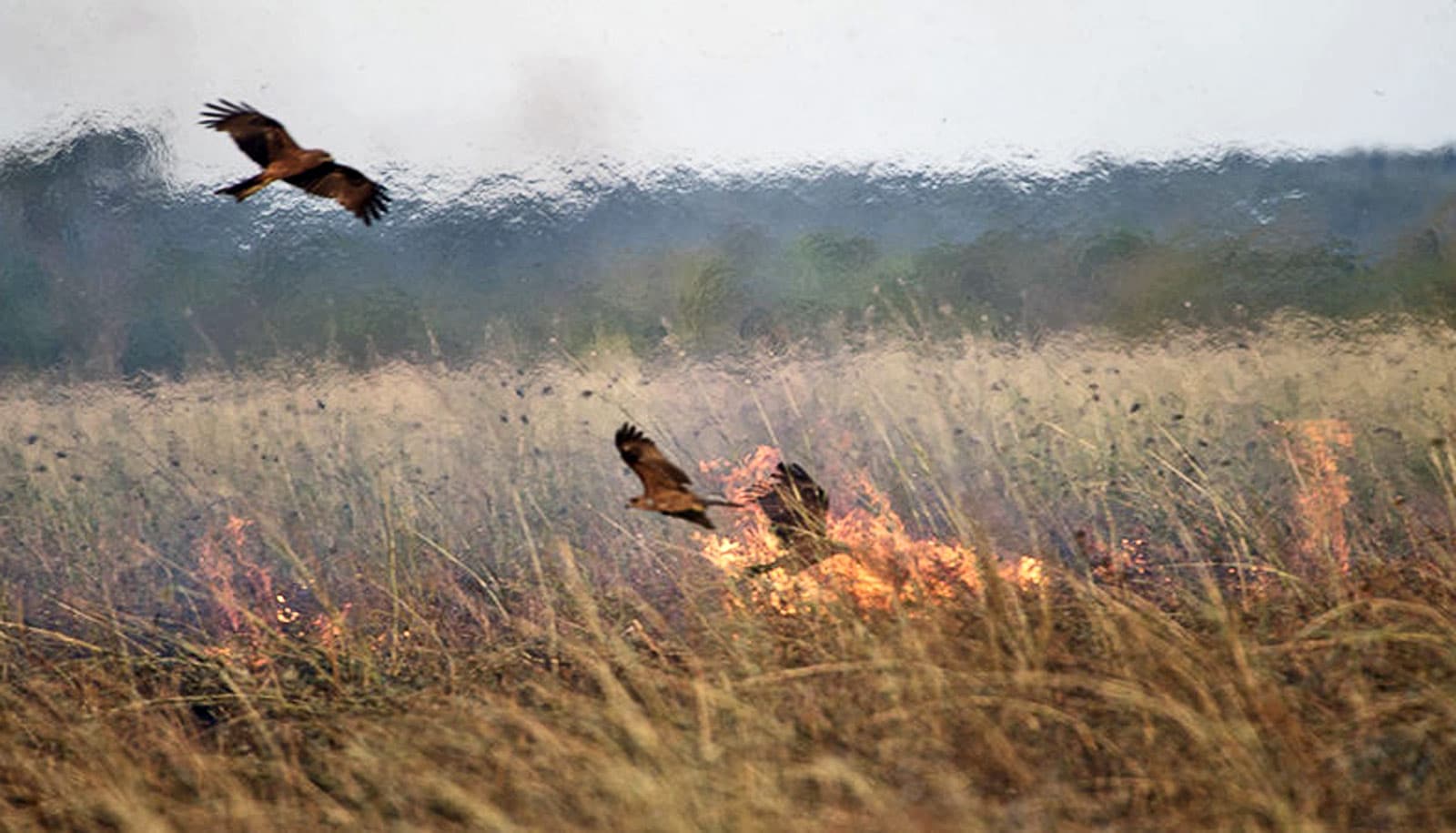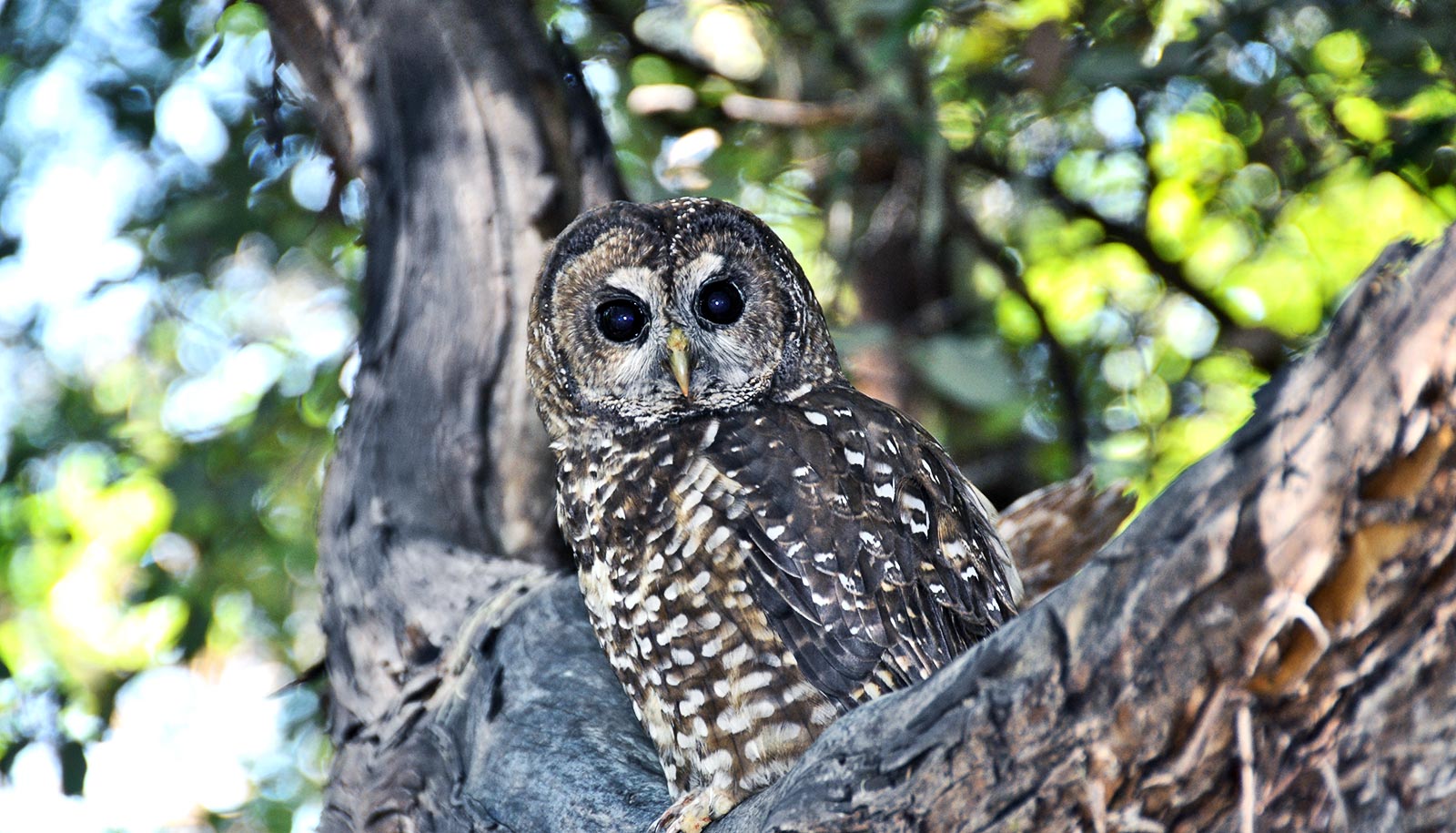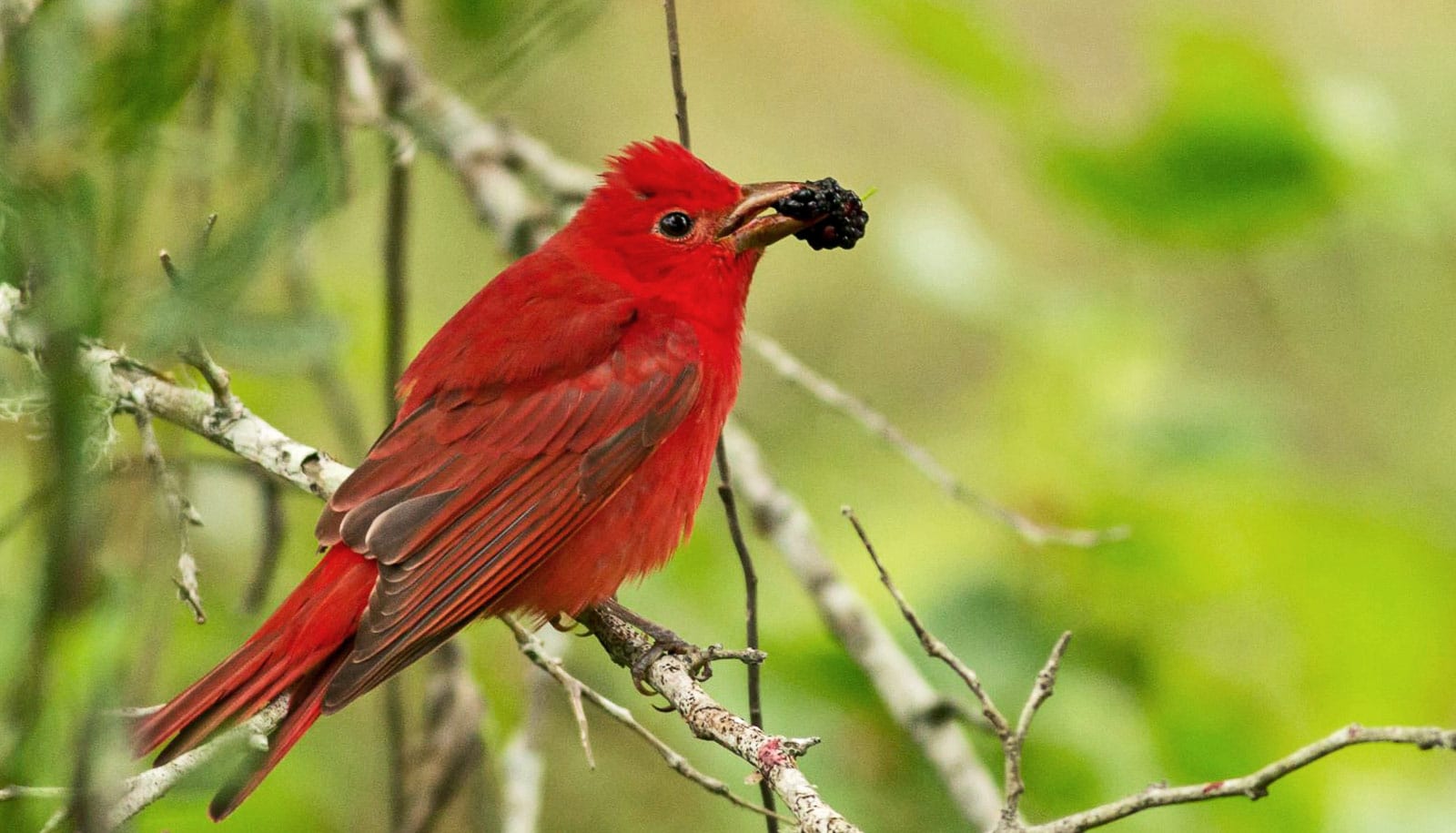It may seem counterintuitive, but forest fires are actually beneficial to spotted owls, according to a new study.
The findings offer a follow-up to a 2018 paper in the journal Ecosphere, in which Derek Lee, associate professor of biology at Penn State, analyzed the results from every published scientific study about the effects of wildfire on the threatened birds. The earlier findings had important implications for management of forests that spotted owls inhabit, which had assumed that fire is a major threat to the owls.
In the new study, also published in Ecosphere, Lee responds to several criticisms of his 2018 paper. After reanalyzing the data according to suggestions, he came to the same conclusions: Wildfires either have no effect or a positive effect on most parameters.
Here, he talks about his research and why his finding suggest that current conservation forest management practices critically need an update:
Why are spotted owls important?
In the western United States, spotted owls typically occur in mature and old-growth conifer and mixed-conifer-hardwood forests. They are particularly sensitive to logging and were listed as a threatened species under the federal Endangered Species Act in 1990.
Because of their association with old-growth forests, spotted owls act as an indicator species—a measure of the biological health of a forest—and are an important aspect of public lands management aimed at preserving the last remaining fragments of our old-growth forests.
What was your motivation for this study?
Current conservation efforts are based on the assumption that forest fires are detrimental to spotted owls. They prioritize fuel-reduction logging that removes trees in an effort to reduce the severity of future fires.
But this logging removes canopy cover and trees important to the owls. The idea is that the risk from wildfire outweighs the harm caused by logging, but the underlying assumption about the risk to owls from wildfire was not well known.
Research on spotted owls in fire-affected landscapes did not begin until the early 2000s. In the 2018 paper, I evaluated all of the available research about the effects of fire on spotted owls and found that fire is not a serious threat to these important birds.
Since the 2018 paper was published, a few pro-logging activists and scientists suggested alternative analyses and interpretations of the data, so I reanalyzed the data for this new paper according to their suggestions. This type of critique and response is part of normal scientific dialogue that helps strengthen our understanding of system as we accumulate evidence.
What are the main results of this paper?
I reanalyzed the existing research on spotted owls in several different ways and ultimately came to the same conclusions as my 2018 paper. Contrary to current perceptions, recovery efforts, and forest management projects, I found that mixed-severity fire including large patches of high-severity fire is not an immediate, dire threat to owl populations.
In 83% of studies I evaluated, spotted owls were not significantly affected by wildfire. Where there was an effect, in most cases it was beneficial.
For example, mixed-severity fires—which results in a mosaic of burn severities—positively impacting the owls’ choice of foraging habitat, the number of owls recruited to the area immediately after a fire, and measures of reproduction. Even high-severity fires—including those that burn 100% of an area—had positive impacts on reproduction.
The results of no major negative effects on spotted owls aren’t that surprising, because this species has been living with forest fire for thousands of years. The fact that spotted owls have adapted to these types of fires over evolutionary time shows that they have seen this before and have learned to take advantage of it.
Forest fires can create extremely biodiverse “snag forests” post-fire, where standing dead trees, fallen logs, shrubs, tree seedlings, and herbaceous plants comprise the structure. In addition to spotted owls, there are many other native plants and animals that thrive in forests burned by high-severity fire. Wildfires create valuable natural habitats that should be protected from damaging management activities like fuels thinning and post-fire logging.
Why is this important?
This paper reiterates that updating our conservation approach to spotted owls is imperative. Regardless of the amount of high-severity burned forest in core nesting and roosting areas, spotted owls are usually not negatively impacted by fire.
In fact, burned areas are beneficial habitat for this species, and thinning and logging intended to reduce fire severity in spotted owl habitat would actually harm the owls. Recent wildfires have spurred pro-logging activists and some scientists to call for more logging to reduce fire in our human communities, but these types of efforts are misguided and do not actually save human lives.
We should not log owl habitat, but rather focus on efforts like hardening human structures against ignition, making community fire shelters, and securing evacuation routes that will actually translate to saving human lives and property.
Source: Penn State



